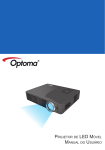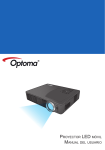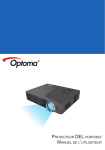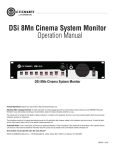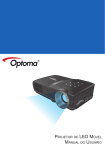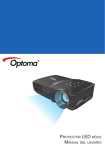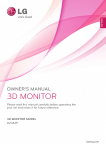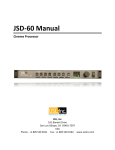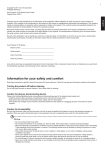Download Operating instructions Vibration sensor VNB001
Transcript
Operating instructions
Vibration sensor
UK
706173/0007/2015
VNB001
Contents
1 Preliminary note���������������������������������������������������������������������������������������������������4
1.1 Notes on this document���������������������������������������������������������������������������������4
1.2 Symbols used������������������������������������������������������������������������������������������������4
2 Safety instructions�����������������������������������������������������������������������������������������������4
2.1 General����������������������������������������������������������������������������������������������������������4
2.2 Installation and connection����������������������������������������������������������������������������4
2.3 Tampering with the device�����������������������������������������������������������������������������5
3 Functions and features����������������������������������������������������������������������������������������5
4 Installation�����������������������������������������������������������������������������������������������������������5
5 Electrical connection��������������������������������������������������������������������������������������������6
5.1 M8/USB interface������������������������������������������������������������������������������������������7
5.2 History values������������������������������������������������������������������������������������������������7
5.3 Real-time clock����������������������������������������������������������������������������������������������7
6 Functions�������������������������������������������������������������������������������������������������������������7
6.1 Input function�������������������������������������������������������������������������������������������������7
6.2 Output function����������������������������������������������������������������������������������������������8
6.2.1 Switching output and analogue output�������������������������������������������������8
6.2.2 Lower limit monitor�������������������������������������������������������������������������������8
6.2.3 Application example of a lower limit monitor�����������������������������������������8
6.2.4 Output logic������������������������������������������������������������������������������������������9
7 Operating and display elements������������������������������������������������������������������������10
7.1 LED display�������������������������������������������������������������������������������������������������10
7.2 7-segment display��������������������������������������������������������������������������������������� 11
7.3 Operating mode������������������������������������������������������������������������������������������� 11
7.3.1 Examples in the operating mode�������������������������������������������������������� 11
7.4 Operating mode external process value������������������������������������������������������12
7.4.1 Example display option (vrms - external process value)�����������������������12
8 Parameter setting����������������������������������������������������������������������������������������������13
8.1 Vibration velocity������������������������������������������������������������������������������������������13
8.2 External process value��������������������������������������������������������������������������������13
8.3 Self-test�������������������������������������������������������������������������������������������������������13
8.4 Averaging�����������������������������������������������������������������������������������������������������14
8.4.1 Calculation������������������������������������������������������������������������������������������14
2
8.4.2 Settings�����������������������������������������������������������������������������������������������14
8.4.3 Diagram averaging�����������������������������������������������������������������������������14
9 Menu������������������������������������������������������������������������������������������������������������������15
9.1 Explanation of the menu������������������������������������������������������������������������������15
9.2 Parameter setting in general�����������������������������������������������������������������������17
9.2.1 Change from menu level 1 to the submenu����������������������������������������18
9.2.2 Locking / unlocking�����������������������������������������������������������������������������18
9.3 Menu structure���������������������������������������������������������������������������������������������19
9.3.1 Menu level 1���������������������������������������������������������������������������������������19
9.3.2 Submenu extended functions�������������������������������������������������������������20 UK
9.3.3 Submenu external sensor�������������������������������������������������������������������21
10 Technical data��������������������������������������������������������������������������������������������������21
10.1 Data sheets�����������������������������������������������������������������������������������������������21
10.2 Software����������������������������������������������������������������������������������������������������21
11 Maintenance, repair and disposal��������������������������������������������������������������������22
12 Approvals/standards����������������������������������������������������������������������������������������22
13 Scale drawing��������������������������������������������������������������������������������������������������22
14 Time diagrams�������������������������������������������������������������������������������������������������23
14.1 Switch-on delay for the upper limit monitor�����������������������������������������������23
14.2 Switching delay for the lower limit monitor������������������������������������������������24
14.3 Averaging for the lower limit monitor����������������������������������������������������������25
15 Factory setting�������������������������������������������������������������������������������������������������26
3
1 Preliminary note
1.1 Notes on this document
This document applies to devices of the type "vibration sensor" (art. no.: VNB001).
It is part of the device and contains information about the correct handling of the
product.
This document is intended for qualified electricians. These specialists are people
who are qualified by their training and their experience to recognise and to avoid
possible hazards that may be caused during operation of the device.
►► Read this document before using the device.
►► Keep this document during the service life of the device.
1.2 Symbols used
► Instruction
> Reaction, result
→ Cross-reference
LED on
LED flashes
Important note
Non-compliance can result in malfunction or interference.
Information
Supplementary note.
2 Safety instructions
2.1 General
►► Observe these operating instructions.
►► Observe the warning notes in these instructions.
Non-observance of the instructions, operation which is not in accordance with use
as prescribed below, wrong installation or incorrect handling can affect the safety
of operators and machinery.
2.2 Installation and connection
The unit must only be installed, connected and put into operation by a qualified
electrician as the safe function of the device and machinery is only guaranteed
when installation is correctly carried out. The installation and connection must
4
comply with the applicable national and international standards. Responsibility lies
with the person installing the device.
2.3 Tampering with the device
Tampering with the device is not allowed and will lead to an exclusion of liability
and warranty. Tampering with the device can affect the safety of operators and
machinery.
3 Functions and features
Monitoring of
• vibration velocity vrms or vpeak
• process value above or below the permissible value
Visualisation of
• process values
• switching states
UK
4 Installation
Please note the following points
when installing the unit:
• Mount only in a thick housing wall
(e.g. crane hook thread).
• Mount vertically to the machine
surface using the spacer adapter
in the direction of the strongest
vibrations. This is usually the
radial direction.
• Tighten the M5 screw with a
tightening torque of 7 Nm.
5
►► Ensure a reliable vibration
transmission. Avoid any elastic
intermediate layers.
1
2
3
4
5
1: measurement axis
2: M5 screw
3: spring washer
4: M8 x M5 adapter
5: machine surface
5 Electrical connection
The unit must be connected by a qualified electrician.
The national and international regulations for the installation of electrical equipment
must be adhered to.
Voltage supply to EN 50178, SELV, PELV.
Disconnect power before connecting the unit.
M12
Pin 1: L+
Pin 2: Out 1
M8
6
Pin 3: L Pin 4: Out 2
Pin 5: IN
Pin 1:
Pin 2:
Pin 3:
Pin 4:
VCC (5 V)
USB DLUSB D+
9.6...30 V DC
switching output or current output 4...20 mA
(configurable)
switching output
current input 4...20 mA
5.1 M8/USB interface
►► First connect the interface cable to the device and then to the USB interface of
the computer.
• The units have a serial number which can be read out using the history
software VNS003.
• The sensor can also be supplied via the USB interface.
• Read out and reset the history values.
Switching and analogue outputs are not supported if an USB power supply is used.
UK
5.2 History values
The unit records history values. The memory interval is 5 min,. the maximum Vrms
value in this time range is recorded with a time stamp.
Recording period about 3 years, the oldest values will then be overwritten (ring
memory).
The history can be read out and reset using the software VNS003 → chapter 10.2
Software.
5.3 Real-time clock
The unit has an integrated real-time clock including a buffer battery for the time
stamp in the history memory.
6 Functions
6.1 Input function
Parameter setting via the Mode/Enter and Set buttons.
• External sensor for any process value (typically temperature (°C, °F))
• Scaleable input (4...20 mA)
Evaluation of the measurement results as for vibration objects
-- Switch points early warning and main alarm adjustable
-- For main alarm < early warning → lower limit monitor
-- Adjustable hysteresis
7
6.2 Output function
6.2.1 Switching output and analogue output
Parameter setting via the Mode/Enter and Set buttons.
OU1
OU2
Analogue output
-- 4..20 mA scaleable measuring range of the vibration
velocity
-- averaging adjustable
-- 22 mA in case of a system error
Switching output
-- early warning
-- SP 1
-- NO / NC adjustable
-- switch-on and switch-off delays adjustable
-- 1 Hz pulsing in case of a system error
Switching output
-- main alarm
-- SP 2
-- NO / NC adjustable
-- switch-on and switch-off delays adjustable
6.2.2 Lower limit monitor
If the SP1 switch point early warning has a higher value than the SP2 switch point
main alarm, these are set as lower limit monitor.
If a lower limit monitor is set, early warning OU1 and main alarm OU2 are
influenced as follows:
-- If the value is greater than SP1, OU1 and OU2 are not active.
-- If the value is between SP1 and SP2, only OU1 is active.
-- If the value is below SP2, OU1 and OU2 are active.
The same applies to the external sensor.
6.2.3 Application example of a lower limit monitor
The sensor is to give a warning if the temperature is below the permissible value.
8
6.2.4 Output logic
The process values "vibration velocity" and "external sensor" are combined via a
logic OR and provided at the switching output.
1
process value
vibration velocity
example: 1
OR
2
process value
external sensor
example: 1
3
OU
example: 0
UK
1: process value vibration velocity
2: process value external sensor
3: switching output
9
7 Operating and display elements
7.1 LED display
Mode/Enter
Set
10
11
12
1...8: LED display / bar graph
1: LED green a = not used
2: LED green v = vibration velocity v [mm/s] or [in/s]
3: LED green d = not used
4: LED green RMS = average value
5: LED green Pk = peak value
6: LED green Ext = process value of the external sensor
7: LED yellow OU1 = early warning active
8: LED red OU2 = main alarm active
9: 7-segment display green, yellow and red, 4 digits
-- Display of the measured values
10: Points
-- Lower points as decimal separators
11: Set button
Parameter setting mode
-- Setting of the parameter values
-- Display option "external process value" or "vibration velocity"
12: Mode/Enter button
-- Selection of the parameters and acknowledgement of the parameter values
10
7.2 7-segment display
• Displays the damage level (green, yellow, red)
If the segment display changes the colour, the switch-on and switch-off delays or
the hysteresis are not considered.
• Displays the current vibration velocity or the current external process value
7.3 Operating mode
The user must be familiar with the units used in the vibration sensor ([mm/s] or [in/s])
and in the external sensor (°C, °F, mBar).
7.3.1 Examples in the operating mode
OU2
OU1
Ext
Pk
RMS
d
v
a
Colour segment display: yellow
Current measured value of the vibration velocity
vrms = 17.35 mm/s.
Parameters
-- Early warning SP1 = 10 mm/s
-- Main alarm SP2 = 20 mm/s
>> Output OU1 is active
If the segment display changes the colour, the switchon and switch-off delays are not considered.
For OU1 and OU2 the switch-on and switch-off delays
are considered.
OU2
OU1
Ext
Pk
RMS
d
v
a
Colour segment display: red
Current measured value imbalance (vpeak) has reached
1.252 in/s.
Parameters
-- Unit uni = in/s
-- Early warning SP1 = 0.5 in/s
-- Main alarm SP2 = 1 in/s
>> Outputs OU1 and OU2 are active
11
UK
OU2
OU1
Ext
Pk
RMS
d
v
a
Colour segment display: red
The external sensor has reached 95 °C.
Parameters
-- Early warning ESP1 = 50 °C
-- Main alarm ESP2 = 90 °C
>> Outputs OU1 and OU2 are active
If the segment display changes the colour, the
hysteresis is not considered.
For OU1 and OU2 the hysteresis is considered.
The LEDs OU1 and OU2 indicate the alarm condition, not the voltage level (high,
low) at the output.
The level can be inverted via the parameters OU1 and OU2 (NC, NO).
Ext
OU1
OU2
Ext
OU1
OU2
Pk
RMS
d
v
a
7.4 Operating mode external process value
In the operating mode "External process value" measured values are displayed,
e.g. pressure values (mBar, hPa...), temperatures (°C, °F).
The detected values are transferred via the measured value input (pin 5).
>> LED "Ext" lights.
7.4.1 Example display option (vrms - external process value)
Pk
RMS
d
v
a
Set
Operating mode vibration velocity
17.35 mm/s vrms
[Set]
Operating mode external process value
e.g. temperature 42.61 °C
[Set]
Operating mode vibration velocity
17.35 mm/s vrms
In the event of an alarm the display changes automatically to the value last
exceeded.
12
8 Parameter setting
Vibration velocity, external process value and self-test parameters can be set via
the Mode/Enter and Set buttons.
8.1 Vibration velocity
For the operating mode vibration velocity the following parameters can be set:
-- Measurement method (rms or peak)
-- Display in mm/s or in/s
-- Switch points
-- Lower limit frequency (2 Hz or 10 Hz) configurable
-- Averaging
-- Switch-on and switch-off delays
-- Switching outputs (NO, NC or analogue for OU1)
UK
If OU1 is selected as analogue:
►► Scale current output.
8.2 External process value
For the operating mode external process value the following parameters can be
set:
-- Scaling 4 mA (EASP), 20 mA (EAEP)
-- Switch points
-- Hysteresis
-- Switching outputs (NO or NC)
8.3 Self-test
Trigger and carry out a self-test.
The self-test is carried out when the sensor is switched on and can also be
triggered manually → [tESt].
Self-test passed → [PASS], self-test failed → [FAIL]
>> LED OU1 pulsing (flashes)
>> Output OU1
-- pulsing if digital (NC, NO)
-- supplies 22 mA if analogue
13
8.4 Averaging
8.4.1 Calculation
Formula to determine the new diagnostic value:
("previous diagnostic value" x (1 - averaging)) + ("new measurement" x averaging)
= new diagnostic value
Example
Averaging 0.25; "previous diagnostic value" 17.3 mm/s;
"new measurement" 14.7 mm/s
(17.3 mm/s x (1 - 0.25)) + (14.7 mm/s x 0.25) = 16.65 mm/s
For the VNB001 the measured time between "previous diagnostic value" and "new
measurement" is 0.25 s.
8.4.2 Settings
Averaging = 1: averaging deactivated
Averaging = 0.01: strong averaging
8.4.3 Diagram averaging
35
30
1
25
20
15
2
10
5
0
1 4 7 10 13 16 19 22 25 28 31 34 37 40 43 46 49 52 55 58 61 64 67 70 73 76 79 82 85 88 91 94 97
1: Diagnosis
2: AVE (1/8)
14
9 Menu
9.1 Explanation of the menu
Menu level 1
EUAL
Evaluation - selection of the measurement method rms "r" or peak "P"
uni
Unit - in/s or mm/s
SP1
Switch point early warning
If the switch point is exceeded,
-- OU1 switches if it is digital "no", "nc",
-- the yellow LED "OU1" lights
-- the measured value display changes to yellow
SP2
UK
Switch point main alarm
If the switch point is exceeded,
-- OU2 switches
-- the red LED "OU2" lights
-- the measured value display changes to red
The displayed values for the switch points SP1 and SP2 change if the unit or the measurement method is changed subsequently.
EF_i
Submenu extended functions
EHt_i
Submenu external sensor
tESt
Self-test (PASS or FAIL)
is automatically carried out when the sensor is switched on
Submenu extended functions EF_i
LFCO
Setting of the lower limit frequency (2 Hz or 10 Hz)
AUER
Averaging → chapter 8.4
dS1
Switch-on delay for OU1 (0...60 s)
dr1
Switch-off delay for OU1 (0...60 s)
dS2
Switch-on delay for OU2 (0...60 s)
dr2
Switch-off delay for OU2 (0...60 s)
ou1
Output logic OU1 no, nc, I (normally open, normally closed, current output)
ASP
Scaling of the current output with respective parameter setting (mm/s or
in/s) at 4 mA. rms or peak is considered. Only relevant for OU1 = "I"
AEP
Scaling of the current output with respective parameter setting (mm/s or
in/s) at 20 mA. rms or peak is considered. Only relevant for OU1 = "I"
15
ou2
Output logic OU2 no, nc (normally open, normally closed)
Submenu external sensor EHt_i
EASP
Scaling of the external sensor,
initial value of the measuring range at 4 mA
EAEP
Scaling of the external sensor,
final value of the measuring range at 20 mA
ESP1
Switch point early warning
If the switch point is exceeded,
-- OU1 switches if it is digital "no", "nc
-- the yellow LED "OU1" lights
-- the measured value display changes to yellow
Eh1
Hysteresis early warning
Absolute distance between set and reset point
ESP2
Switch point main alarm
If the switch point is exceeded,
-- OU2 switches
-- the red LED "OU2" lights
-- the measured value display changes to red
Eh2
Hysteresis main alarm
Absolute distance between set and reset point
Error message
Err1
16
The value to be displayed is less than -999 or greater than 9999.
►► Check the scaling of the current output (ASP, AEP) and set again.
9.2 Parameter setting in general
During the parameter setting process the monitoring function of the unit is
maintained. It continues to monitor with the existing parameters until the
parameter setting has been completed.
3 steps must be taken for each parameter setting:
1
2
3
Select the parameter
►► Press [Mode/Enter] until the requested parameter is displayed.
Set the parameter value
►► Press [Set].
>> The current setting value of the
parameter is displayed.
►► Press [Set] for 3 s.
►► Setting of the decimal point (cc.
cc) and the sign by pressing [Set]
several times.
►► Press [Mode/Enter] to confirm.
►► Set an individual digit with [Set] and
confirm with [Mode/Enter].
►► Repeat with all digits.
Confirm the parameter value
►► Press [Mode/Enter].
>> The parameter is displayed again.
The new setting value is saved.
Mode/Enter Set
UK
Mode/Enter Set
Mode/Enter Set
Set other parameters
►► Start again with step 1.
Change the operating mode
►► Press [Mode/Enter] several times until the current measured value is displayed.
>> The unit returns to the operating mode.
If no button is pressed within 30 s, the unit automatically returns to the operating mode.
17
9.2.1 Change from menu level 1 to the submenu
►► Press [Mode/Enter] until [EF┘] is
displayed.
►► Press [Set] briefly.
>> The first parameter of the submenu is
displayed (here: [LFCO]).
Mode/Enter Set
Mode/Enter Set
9.2.2 Locking / unlocking
The unit can be locked electronically to prevent unintentional settings.
►► Make sure that the unit is in the
normal operating mode.
►► Press [Mode/Enter] + [Set] for 10 s.
>> [Loc] is displayed.
Mode/Enter Set
During operation: [LOC] is briefly displayed if you try to change parameter values.
For unlocking:
►► Press [Mode/Enter] + [Set] for 10 s.
Mode/Enter Set
>> [uLoc] is displayed.
Factory setting: not locked.
18
9.3 Menu structure
9.3.1 Menu level 1
Vibration
Operating
mode
Ext. input
UK
19
9.3.2 Submenu extended functions
20
9.3.3 Submenu external sensor
UK
10 Technical data
10.1 Data sheets
Data sheets can be found at:
www.ifm.com → Data sheet search → VNB001
10.2 Software
History tool incl. driver can be found at: www.ifm.com → Service → Download
→ Condition monitoring systems → VNS003
21
11 Maintenance, repair and disposal
►► Dispose of the device in accordance with the national environmental
regulations.
12 Approvals/standards
The EC declaration of conformity and approvals can be found at:
www.ifm.com → Data sheet search → VNB001 → More information → Certificates
13 Scale drawing
14
M12 x1
36
62,4
51
20
5,3
6
37,6
10
M8x1
4
5
22
5,3
M5
14 Time diagrams
14.1 Switch-on delay for the upper limit monitor
The time diagram shows the effect of the switching delay on the analogue input
for an upper limit monitor (ESP1 < ESP2). The outputs are set as normally closed
(OU1 and OU2 → nc).
Analogue In
[°C]
{ ESP2
Eh2
Eh1
UK
{ ESP1
24 V
0V
t [s]
20
10
OU 1 (n.c.)
ds1, ds2, dr1, dr2 = 0 s
off
off
on
on
t [s]
20
10
OU 2 (n.c.)
off
24 V
on
0V
24 V
0V
24 V
0V
off
on
t [s]
20
10
OU 1 (n.c.)
ds1, ds2 = 2 s / dr1, dr2 = 3 s
2s
1
on
2s
10
on
t [s]
20
10
OU 2 (n.c.)
ds1, ds2 = 2 s / dr1, dr2 = 3 s
off
3s
off
2
3s
20
t [s]
1: Not switched off because the selected switching delay is too short (< 3 s).
2: Not switched on because the selected switching delay is too short (< 2 s).
If the switching delays of early warning and main alarm are set differently:
-- main alarm already switched on, early warning not yet switched on
-- early warning already switched off, main alarm not yet switched off
23
14.2 Switching delay for the lower limit monitor
The time diagram shows the effect of the switching delay on the analogue input for
a lower limit monitor (ESP1 > ESP2). The outputs are set as normally closed (OU1
and OU2 → nc).
Analogue In
[°C]
{
Eh1 ESP1
{
Eh2 ESP2
24 V
0V
t [s]
20
10
OU 1 (n.c.)
ds1, ds2, dr1, dr2 = 0 s
off
off
on
on
t [s]
20
10
OU 2 (n.c.)
off
24 V
on
0V
24 V
0V
24 V
0V
off
on
OU 1 (n.c.)
ds1, ds2 = 2 s / dr1, dr2 = 3 s
2s
off
3s
on
OU 2 (n.c.)
ds1, ds2 = 2 s / dr1, dr2 = 3 s
on
10
3s
off
2s
3s
t [s]
20
10
2s
t [s]
20
10
off
1
20
1: Not switched on because the selected switching delay is too short.
24
t [s]
14.3 Averaging for the lower limit monitor
The time diagram shows the effect of averaging for a lower limit monitor (SP1 >
SP2). The outputs are set as normally closed (OU1 and OU2 → nc), AUER = 0.25
averaging
vrms [mm/s]
1
2
SP1
UK
SP2
10
24 V
OU 1 (n.c.)
ds1, ds2, dr1, dr2 = 0 s
off
on
0V
20
t [s]
20
t [s]
20
t [s]
off
on
10
OU 2 (n.c.)
off
24 V
0V
on
off
on
10
1: raw signal
2: averaged signal
25
15 Factory setting
Factory setting
EUAL
rms
uni
mm/s
SP1
SP2
2.8 [mm/s]rms
4.5 [mm/s]rms
LFCO
AUER
User setting
[mm/s or in/s]
[mm/s or in/s]
10 [Hz]
0,125
[Hz]
dS1
dr1
dS2
dr2
ou1
0 [s]
0 [s]
0 [s]
0 [s]
nc
[s]
[s]
[s]
[s]
ASP
AEP
ou2
0 [mm/s]rms
25 [mm/s]rms
nc
EASP
EAEP
ESP1
Eh1
ESP2
Eh2
0 example: [°C]
100 example: [°C]
10 example: [°C]
1 example: [°C]
20 example: [°C]
1 example: [°C]
26
[mm/s or in/s]
[mm/s or in/s]
[
[
[
[
[
[
]
]
]
]
]
]
UK
27




























